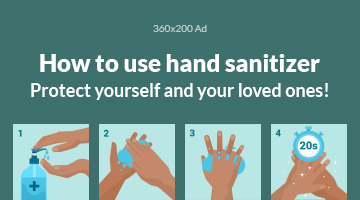Voyeur’s Web: An In-Depth Exploration
Introduction
Voyeurism, the practice of gaining sexual pleasure from watching others when they are naked or engaged in sexual activity, has evolved significantly in the digital age. This phenomenon, often facilitated through the internet, is what we term as the “Voyeur’s Web.” Understanding voyeurism is crucial as it intersects with privacy concerns, legal implications, and ethical dilemmas in today’s connected world.
History of Voyeurism
Origins and Early Instances
Voyeurism isn’t a new concept. It has roots in ancient civilizations where public baths and communal living provided ample opportunities for such behavior. Historical texts and anecdotes from the Roman and Greek eras often hint at voyeuristic tendencies.
Voyeurism in Literature and Art
Throughout history, voyeurism has been a recurrent theme in literature and art. From the “Peeping Tom” of Lady Godiva’s legend to the subtle nuances in Renaissance paintings, the act of secretly observing others has fascinated and repelled in equal measure.
The Psychology Behind Voyeurism
Psychological Theories
Several psychological theories attempt to explain voyeurism. Sigmund Freud’s psychoanalytic theory suggests that voyeurism may be linked to childhood experiences and repressed desires. Behavioral psychologists, on the other hand, argue that voyeurism is a learned behavior reinforced by the excitement and arousal it generates.
Common Traits Among Voyeurs
Research indicates that voyeurs often exhibit traits such as introversion, social anxiety, and a tendency toward obsessive-compulsive behaviors. These individuals might find voyeurism a way to experience intimacy without direct interaction.
The Digital Age and Voyeurism
Emergence of Voyeuristic Websites
The internet has revolutionized voyeurism. Websites dedicated to voyeuristic content have mushroomed, providing a platform for individuals to watch others anonymously. These sites often operate in a legal grey area, complicating efforts to regulate them.
Impact of Social Media
Social media platforms have also inadvertently contributed to voyeurism. With users frequently sharing personal moments, voyeurs find ample material to satiate their desires, often without the explicit consent of the subjects involved.
Legal Aspects of Voyeurism
Laws Governing Voyeurism
Legislation on voyeur’s web globally. In many jurisdictions, unauthorized recording or peeking into private spaces is a criminal offense. However, the enforcement of these laws can be challenging, especially with the anonymity offered by the internet.
Famous Legal Cases
Notable legal cases highlight the complexities of prosecuting voyeurism. For instance, the Erin Andrews case, where a sportscaster was secretly filmed in her hotel room, brought significant attention to the issue and resulted in substantial legal consequences for the perpetrator.
Voyeurism vs. Privacy
The Thin Line Between Observation and Invasion
The distinction between harmless observation and invasive voyeurism is often blurred. While watching someone in a public space might seem benign, the context and intent can shift it into the realm of privacy invasion.
Case Studies
Several case studies illustrate this thin line. For example, the rise of hidden cameras in public and private spaces underscores the persistent threat to individual privacy and the ethical considerations it raises.
Voyeuristic Content on the Web
Types of Content
Voyeuristic content on the web ranges from live streams of public places to unauthorized recordings of private moments. This content is often categorized based on the setting, such as public, semi-public, or private environments.
Popular Voyeuristic Websites
Websites like “Insecam” and “VoyeurWeb” attract millions of viewers by offering access to unsecured webcams and user-uploaded content, respectively. These platforms thrive on the allure of forbidden glimpses into others’ lives.
Ethical Considerations
Moral Implications
Voyeurism raises significant moral questions. Is it ethical to watch someone without their consent? What are the consequences for the observed individual? These questions challenge our perceptions of privacy and consent in a digital age.
Societal Views on Voyeurism
Society’s views on voyeurism are complex. While often condemned publicly, voyeuristic behavior is sometimes normalized or trivialized, particularly in popular culture and media.
How to Protect Yourself from Voyeurism
Practical Tips
Protecting yourself from voyeurism requires vigilance. Simple measures like covering webcams, using privacy settings on social media, and being aware of your surroundings can significantly reduce the risk.
Technological Solutions
Advancements in technology also offer protection. Anti-spyware software, secure home networks, and privacy-focused apps can help safeguard against voyeuristic intrusions.
The Role of Technology in Voyeurism
Advances in Surveillance Technology
Surveillance technology has made it easier for voyeurs to operate. Tiny cameras, drones, and sophisticated software can be used to spy on individuals discreetly, posing new challenges for privacy protection.
Future Trends
Looking ahead, the integration of artificial intelligence and augmented reality could further complicate the landscape of voyeurism, making detection and prevention more challenging.
Voyeurism in Popular Culture
Movies and TV Shows
Voyeurism has been a popular theme in movies and TV shows. Films like “Rear Window” and series like “Black Mirror” explore the psychological and societal implications of voyeuristic behavior.
Impact on Public Perception
These portrayals influence public perception, often glamorizing or sensationalizing voyeurism, which can obscure the real ethical and legal issues involved.
Psychological Impact on Victims
Emotional and Mental Health Effects
Victims of voyeurism often experience significant emotional distress, including anxiety, depression, and a sense of violation. The psychological impact can be long-lasting and profound.
Support and Resources
Support for victims is crucial. Counseling services, support groups, and legal assistance can help individuals cope with the aftermath of voyeuristic violations and regain a sense of control.
Combating Voyeurism
Law Enforcement Strategies
Effective law enforcement strategies are essential in combating voyeurism. This includes specialized training for officers, public awareness campaigns, and robust legal frameworks.
Community Initiatives
Community initiatives also play a vital role. Educational programs, neighborhood watch groups, and collaboration between community members can help prevent voyeurism and support victims.
Therapeutic Approaches for Voyeurs
Counseling and Therapy Options
Therapy can help voyeurs understand and manage their behavior. Cognitive-behavioral therapy (CBT) and other counseling approaches have shown promise in addressing the underlying issues driving voyeuristic tendencies.
Success Stories
There are success stories of individuals overcoming voyeuristic behaviors through therapy and support. These stories highlight the potential for positive change and the importance of seeking help.
Conclusion
Voyeurism in the digital age presents complex challenges that intersect with privacy, legality, and ethics. Understanding the roots and psychological aspects of voyeurism, along with recognizing its impact on victims, is crucial. By leveraging technology and legal frameworks, and fostering community support, we can work towards mitigating voyeurism and protecting individual privacy.






